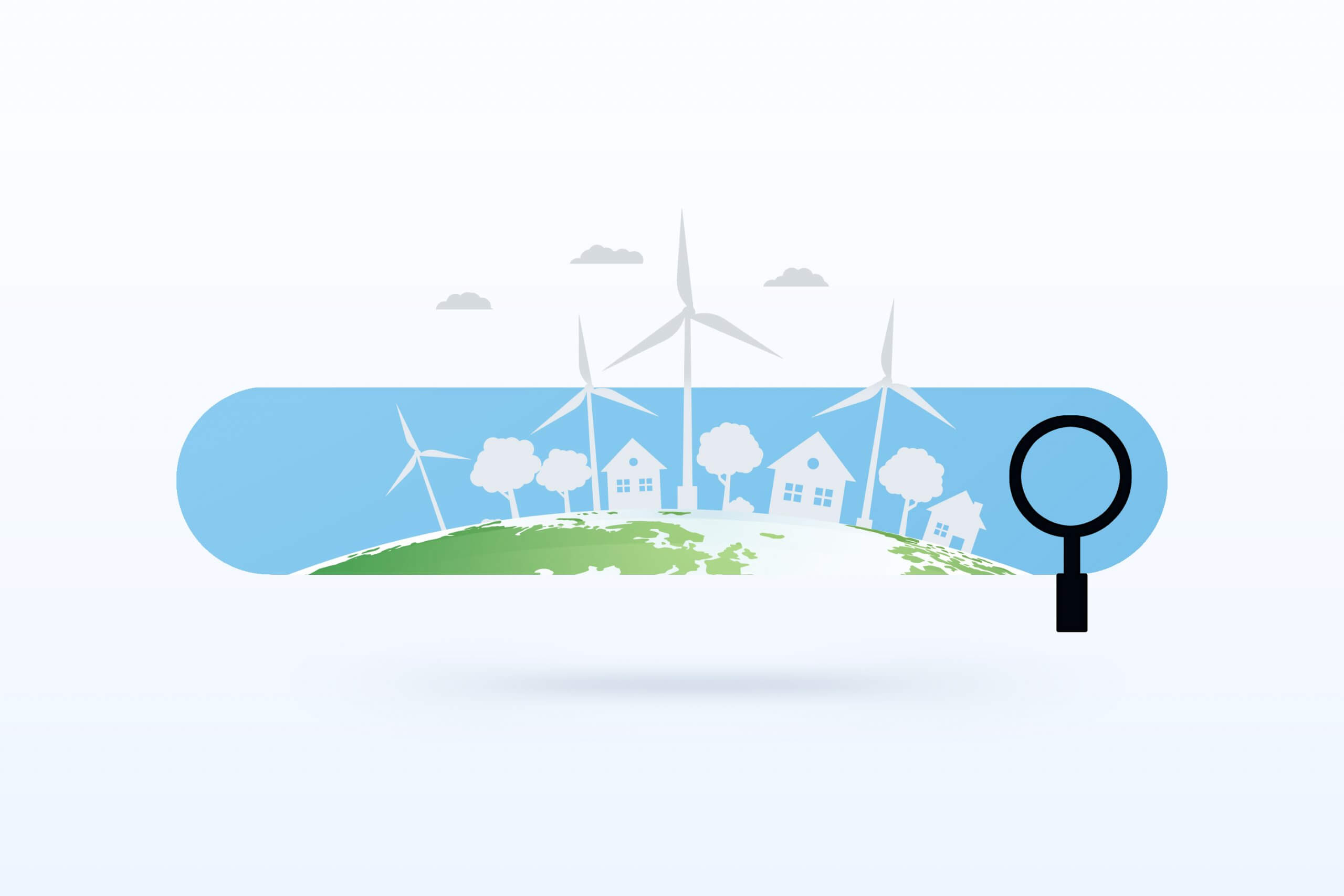Sustainable Web Design – Need To Talk About This Now!
Rising temperature, melting icebergs, dying endangered species and thinning forests have made us restless. We often worry about Mother Earth and her deteriorating health, don’t we? It bothers me a lot; I am sure it disturbs you as well.
Carbon emission is one of the most dominating factors that’s spoiling the biosphere and causing irrecoverable environmental impact. We often blame deforestation for multiplying its effect and switching to online transactions and communication; to reduce paper wastage and save trees. However, how far is this helping? We need to look at this side of the story because research worldwide reveals a different picture. It is much different from what we assumed.
 Photo by Guillaume Falco from Pexels
Photo by Guillaume Falco from Pexels
Why Should We Switch To Sustainable Website Design?
Online activities are not very sane. We are often told to switch to online modes of operation because that supports the environment, but evidence points to a different reality. Whether it’s online or offline activities, both can harm the environment; we need to adopt sustainable options for using the internet and other online services.
Sustainability For The Virtual World
Going by how the UN World Commission on Environment and Development describes ‘environment sustainability’, it is acting responsibly to ensure coming generations will have access to and be able to use the natural resources. The future generation should live, at least, an equal standard of life like the present generation, if not better.
From the perspective of the internet world, sustainability is creating a sustainable web design that will suffice the need of its present users without compromising the resources and the possibility of meeting similar requirements in the days to come.
We create a gamut of activities and awareness drive to preserve our natural resources and reduce the impact of environmental hazards. We do all for the real world, rather the world we can touch, feel, taste, smell and see. But is that the only world we live in? Why aren’t we counting in the virtual world, which is so much a part of us? It is as accurate as the offline world, and you are well aware of it, right? So, like every real-world activity produces waste and toxins, it happens the same in the virtual world. If you want to create a sustainably friendly environment, you need to curb the harmful elements from the virtual world.
 image source: TRIMAlfa.eu
image source: TRIMAlfa.eu
Why Must We Be Bothered About It?
Since a website is the primary and one of the most typical online platforms representative, we are speaking about websites. When you are often asked to use online banking services, they refer to a bank’s website or any other financial institution. Is this safe for the environment?
Researchers from across the world have pointed out a grave area of concern. To make an online service available to the public or go live, you need to use several physical products. The virtual habitat is assumed to be green, non-toxic, waste-free and environment friendly. However, that is not entirely true.
I am sorry to break your heart. You need to know this: engaging animations, even Google search, running a website, and other online activities consume a high amount of energy. It has a direct impact on the environment and adds to global warming. Aren’t we addicted to our internet times? Well, internet-connected devices will increase global emissions by almost 3.5 per cent within the next ten years. Does that scare you? I wouldn’t be surprised if it did; it frightened me. However, I intend to not inject fear in you but inform you about a growing demon that we might haven’t yet noticed.
The IT industry consumed about 3 to 5 percent of the world’s electricity in 2015. A study has revealed it. It also projected an increased consumption – 25 per cent, by 2025. What makes things even worse is that the carbon emissions can go higher by 5.5 per cent by the same time.
How Websites Harm The Environment?
Often seen as harmless, the internet is a silent contributor to global carbon emission. As we increase our dependence on the internet, the traffic increases, volumes increase at data centres, and it requires more servers for supporting thick internet traffic. It takes global carbon emission to 3.7 per cent. Superfast connectivity has also given us an unsafe environment. Every time you send an email, a tiny amount of carbon is emitted, increasing with bulk actions. Besides this, total energy consumption is also set to triple in the next five years.
A website uses several features that make it exciting and interactive. To develop and support these features, you prepare codes and the UX, everything requires energy to operate, and this consumes natural resources, which is again irreversible.
When enjoying high-resolution video streaming on your smartphone, did you think about its harm to the environment? A higher volume of video streaming, online recording of surveillance camera records and even emails produce data centres footprints. However, communities worldwide have taken note of this situation and tried different measures to curb it down. Tim Frick, CEO, Mightybytes, elaborated that environmental communities worldwide take a proactive stance in fighting global carbon emission. They are compelling major tech giants like Apple, Google, Facebook and others, to use renewable energy for their centres for data.
The website pages have also increased to a fancy number. It’s not just the numbers; even the page size of individual pages has also increased, adding to the issue. It consumes unnecessary energy, stretches page load time, disturbs web performance, increases carbon emission and interferes with user experience at the same time.
Sustainable Design: How Your Website Design Can Save Energy And The Environment
If the problems have scared you this far, I assure you that the solutions will inspire you. Here, we will talk about the answers – how web developers can play a decisive role in creating websites that will reduce emissions.
Solutions To Tackle The Mess
The internet, websites, mobile apps and internet-connected devices have transformed trade and commerce, education, administration and what not? When these beautiful agents of changes have been found with flaws, we need to fix them. Are you thinking of using green web hosts? We might not need that right now. Here I have collected a list of possible things that will help in fixing the flaws.
Firstly, you need to create a sustainable website design. Team of website developers’ work on the approved plans and app interface (as required), and thus a website shapes up.
Secondly, go for compression. When you use larger files, it creates an unwanted impact. So, I suggest you compress files. It reduces the files’ size, reducing the load on a server and improving website performance and web experience.
Thirdly, change browser caching settings. When you download a web page, you even need images, specific font styles, CSS, HTML and even JavaScript. You can either download these files every time you visit a website or change the browser caching settings and keep a copy of the files for a longer time. It reduces a website’s loading time.
Fourthly, use the HTTP/2 protocol. It is an effective option for minimizing the download times of a website page. It means lesser carbon emission, more energy efficiency and a safer environment.
Fifthly, use CSS Sprites for compressing images. A website will have multiple photos and designs, which increases file size and takes longer to load. It is unwanted, and you can reduce the image file size by using it. It compresses multiple images into a single image file that you can use on your website. It reduces page weight, takes lesser loading time, multiplies performance speed and reduces energy consumption at the same time.
 image source: www.freepik.com
image source: www.freepik.com
The internet has become such an integral part of our lives and living. We use it on desktops, laptops and also mobile devices. Even if I list down a thousand negative things about it, you may try to overlook it; I might have done that as well, had I been in your place. However, whether I like it or not, websites and other internet-connected devices are causing substantial harm to our environment. You can either use devices powered by renewable energy or take constructive and planned actions to minimize its impact. I have mentioned quite a few of them here, and I hope you implement them and create a sustainable virtual world as well.
If you want to create a sustainable website for your business and want to contribute to saving our beautiful planet, contact us.






 Branding
Branding Digital Strategy
Digital Strategy PR & Communications
PR & Communications